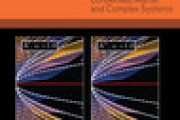 2020-09-30
2020-09-30
New research published in EPJ B reveals that the higher-than-expected efficiency of PLEDs can be reached through interactions between triplet excitons, and impurities embedded in their polymer layers.
(Image: EPJ B)
Polymer LEDs (PLEDs) are devices containing single layers of luminescent polymers, sandwiched between two metal electrodes. They produce light as the metal layers inject electrons and holes into the polymer, creating distortions which can combine to form two different types of electron-hole pair: either light-emitting ‘singlets,’ or a non-...
Continue reading →
 2020-09-30
2020-09-30